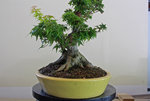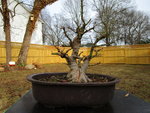Lars Grimm
Chumono
Hi All,
This is a progression thread for a chuhin sized kotohime in my collection. This was originally purchased from @MACH5 in the summer of 2017. Like almost all kotohime in the US, it was originally from @William N. Valavanis stock. Here are the pictures originally from Sergio in a Koyo pot at the time. It has a great base. The canopy needed to be completely built and some trunk chops still needed to be healed.




This is a progression thread for a chuhin sized kotohime in my collection. This was originally purchased from @MACH5 in the summer of 2017. Like almost all kotohime in the US, it was originally from @William N. Valavanis stock. Here are the pictures originally from Sergio in a Koyo pot at the time. It has a great base. The canopy needed to be completely built and some trunk chops still needed to be healed.






















